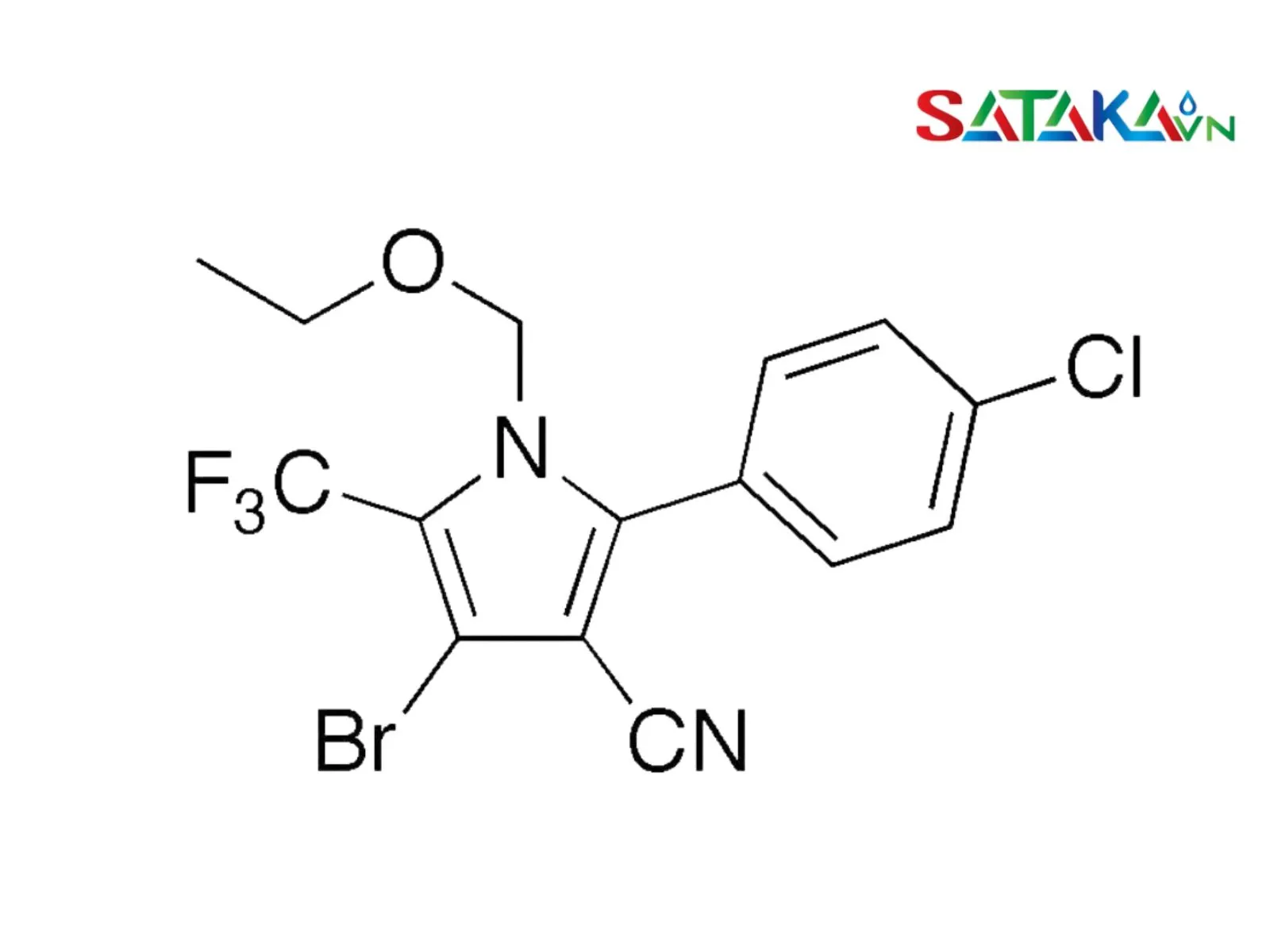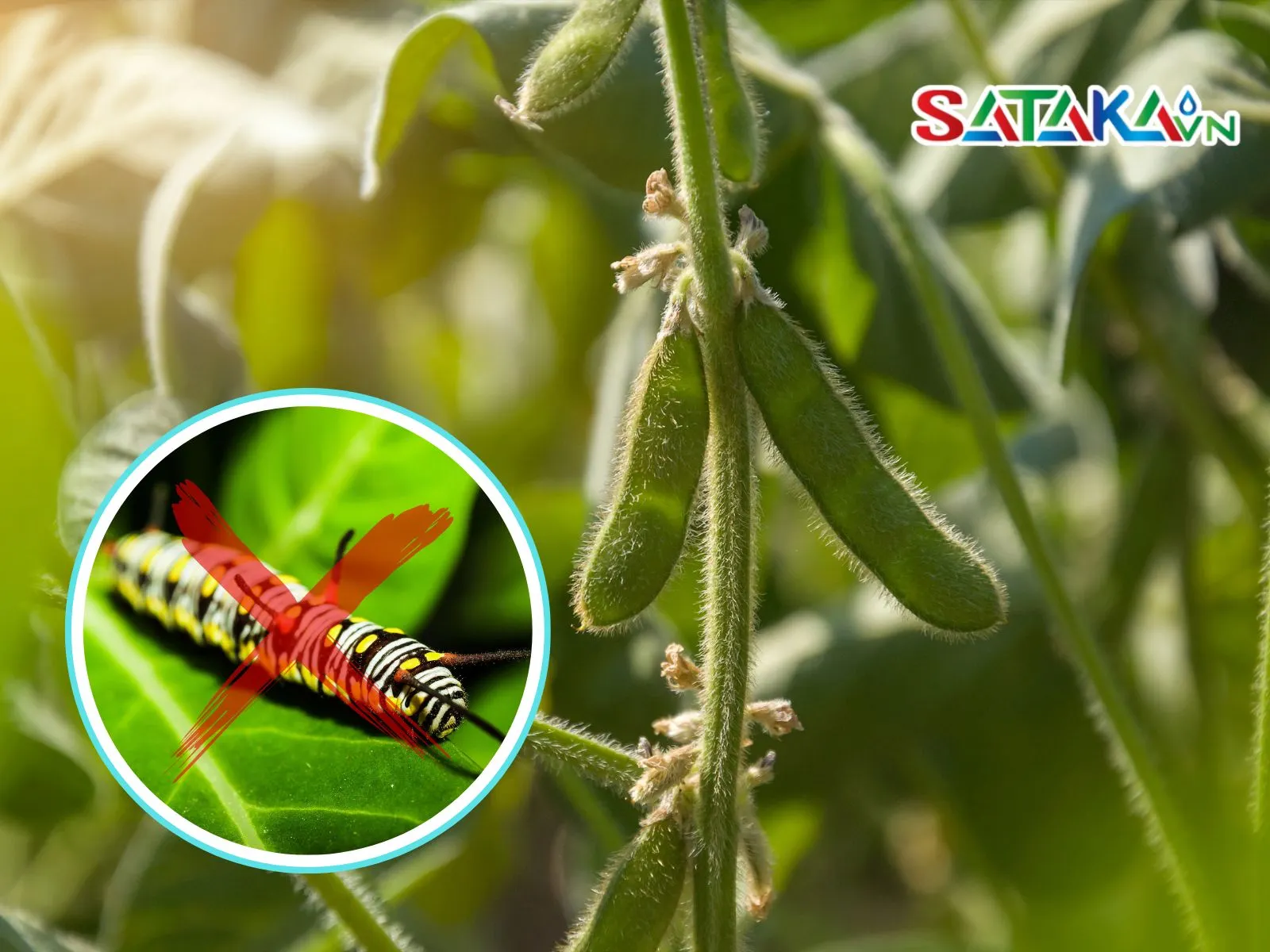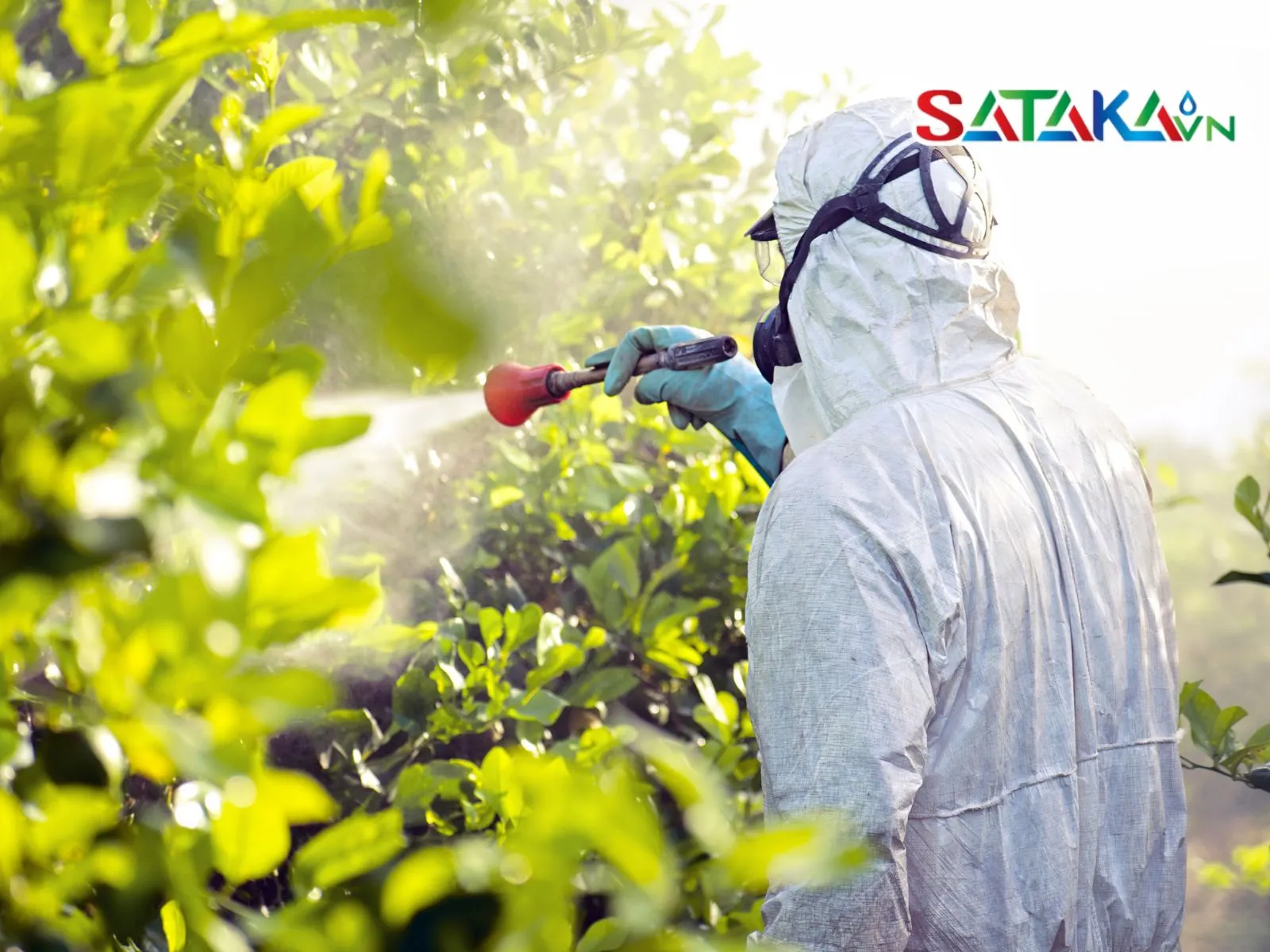Learn about the uses of Chlorfenapyr with soybeans; Highly effective in controlling pests, enhancing resistance and productivity. Find out with Sataka!
Uses of Chlorfenapyr with Soybeans
When caring for soybean crops, understanding the benefits of Chlorfenapyr is crucial to ensure effective farming practices. Chlorfenapyr is a unique active ingredient that effectively controls pests, strengthens plant resistance, and boosts yields. In this article, Sataka will explore the outstanding advantages of Chlorfenapyr and how to use it correctly to achieve the best results in soybean farming.
1. What is Chlorfenapyr?
Chlorfenapyr is a chemical compound primarily used in agriculture to control and prevent pest infestations. Classified as a pyrrole insecticide, Chlorfenapyr works by disrupting the metabolism of insects, ultimately leading to their death.

Chlorfenapyr
With its special chemical structure, Chlorfenapyr penetrates pests quickly, making it highly effective against hard-to-control pests. When used correctly, Chlorfenapyr can target a wide range of pests, protecting crops from various threats. Thanks to its efficacy, Chlorfenapyr has become a popular choice among farmers, especially in soybean cultivation.
2. Benefits of Chlorfenapyr for Soybean Crops
Chlorfenapyr is not only an effective solution for pest control but also offers significant benefits for soybean plants. Below are the key benefits:
2.1. Effective Pest Control
Chlorfenapyr is highly effective in combating pests. It directly disrupts the metabolic systems of insects, rapidly reducing their survival rates. When applied to soybean crops, it minimizes infestations by pests such as green caterpillars, leaf-rolling caterpillars, and other harmful species.
2.2. Enhancing Plant Resistance
Another important benefit of Chlorfenapyr is its ability to enhance plant resistance. By protecting soybeans from pest threats, the plants can maintain better health and grow more robustly. Increased resistance helps soybeans withstand adverse factors such as harsh weather and other plant diseases, ensuring their overall growth and development.

Fight pests and diseases on soybean plants
2.3. Improving Yield and Bean Quality
Using Chlorfenapyr can also improve soybean yield and quality. When plants are free from pest attacks, they can focus their energy on growth and reproduction. As a result, farmers can harvest higher-quality soybeans with improved yields. This not only increases the economic value of the produce but also creates favorable conditions for future crop care.
3. How to Use Chlorfenapyr in Soybean Cultivation
When using Chlorfenapyr in soybean farming, proper application, timing, and dosage are essential. Here’s a detailed guide:
3.1. Timing and Dosage
- Recommended Dosage for Soybeans: For optimal results, the recommended dosage of Chlorfenapyr for soybeans ranges from 0.3 to 0.5 liters per hectare. However, always consult the manufacturer’s instructions or agricultural experts to adjust the dosage according to your farm’s specific conditions.
- Correct Mixing Technique: To mix Chlorfenapyr correctly, dilute the product with water at the manufacturer’s recommended ratio. Proper mixing not only enhances pest control efficacy but also minimizes risks to crops. Stir the mixture thoroughly to ensure even distribution of the active ingredient.

Spraying for pests
3.2. Application Method
- Spraying Time: Timing is crucial for maximizing the effectiveness of Chlorfenapyr. Spray when pests first appear or during their active growth stage. Spraying in the early morning or late afternoon helps the product adhere better and ensures optimal effectiveness.
- Preventive and Curative Sprays: Chlorfenapyr can be used for both preventive and curative pest control. For preventive spraying, apply before pest infestations occur or at the first signs of an attack. For curative spraying, apply when pests are already present and causing significant damage. Regular and timely spraying ensures better pest control.
4. Environmental and Consumer Health Impacts of Chlorfenapyr
4.1. Environmental Impacts
- Effect on Non-Target Species: Chlorfenapyr has a lower impact on non-target species compared to some other pesticides, but care must still be taken to avoid harming beneficial insects.
- Water and Soil Pollution: Improper use can lead to pollution. Avoid spraying during rain or strong winds, and dispose of packaging and residues properly.
- Decomposition and Accumulation: While Chlorfenapyr decomposes slowly, proper usage typically results in safe accumulation levels in soil and water.
4.2. Consumer Health Impacts
- Health Risks: Direct exposure can cause skin, eye, and respiratory irritation. Always wear protective gear when spraying and avoid direct contact with the product.
- Pre-Harvest Interval: Follow the recommended pre-harvest interval to ensure pesticide residues are at safe levels.
- Residue Management: Dispose of packaging and equipment properly to prevent contamination and protect public health.
5. Precautions When Using Chlorfenapyr
-
Resistance Management:
- Risk of Resistance: Continuous use of Chlorfenapyr may lead to pest resistance.
- Prevention: Rotate Chlorfenapyr with other insecticides and combine it with other pest control measures to mitigate resistance.
-
Environmental Protection:
- Impact on Non-Target Species and Environment: Avoid spraying during rain or strong winds. Properly handle packaging and residues to minimize environmental impact.
-
Food Safety:
- Pre-Harvest Interval: Adhere to the recommended interval before harvesting to ensure consumer safety.

Comply with the quarantine period before harvesting
Chlorfenapyr offers significant benefits for protecting soybean crops from pests, enhancing plant resistance, and improving bean quality and yield. This product is not only effective in pest control but also long-lasting, helping maintain crop health throughout the growing season.
Choose Chlorfenapyr from Sataka for high-quality products and dedicated support. Sataka is committed to providing optimal solutions for soybean care. Contact us now for prompt assistance!



